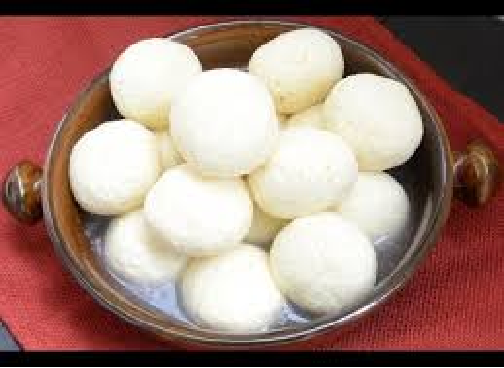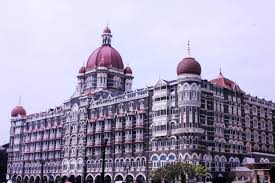
War between West Bengal and Orrisa for the Geographical Indication (GI) tag for the rosogulla has finally reached a conclusion , and West Bengal won the matter before .
Before making the claim for GI in WIPO ( World Intellectual Property Right ) have to decide the actual Geographical origin of the Rosogulla . under this battle W.B. is oblivious claimant but Orissa was also claiming for the same as “Sunder Bhog” similar to Rosogulla .Representational image. AFP
A geographical indication is a sign used on products that have a specific geographical origin and possess qualities or a reputation that are due to that origin.”
As per Rule the GI tag provides an assurance of quality and uniqueness, which are attributable to the place of its origin.This agricultural, natural or a manufactured cultural product is awarded a tag by experts to protect manufacturers who produce these genuine products. They also get a premium pricing for the same in the domestic and international markets thanks to the tag.Some other products from India to get the tag include Maheshwari Saree , Agare Ka Petha , Nagpur oranges and recently Ratlami Sev etc.
West Bengal chief minister Mamata Banerjee was delighted by the news. “Sweet news for us all. we are very happy and proud that Bengal has been granted GI status for rasgulla,” she said, taking to Twitter to express her delight. it brings to a conclusion a bitter battle over the sweet. For years, Odisha and West Bengal have bickered over where the dish originated from. Odisha claimed to have “invented” the sweet, saying it had ties to a centuries-old ritual associated with Lord Jagannath.
The tussle escalated in June 2015, after Odisha’s science and technology minister Pradip Kumar Panigrahi set up committees to trace the origin of the dish, as per a report on CNN-News18. They even went a step further to declare 30 July as ‘Rasagolla Dibasa’ to celebrate its origin.
The report said that the West Bengal government then decided to fight this claim legally and provided evidence that the dessert was, in fact, created by renowned sweet-maker Nabin Chandra Das in 1868. Das’ great-grandson, also the executive director of KC Das Pvt Ltd, told The Indian Express that they were happy with the decision. “We are all so happy. It was a bitter fight. We provided documents to prove our claim that rasgulla originated from Bengal. We also thank our chief minister, who after seeing media reports, asked the government to apply for GI registration,” he said.

First time in India Trade Mark Registry has assigned an image of the tomb of Hotel Taj Mahal Palace l. first structure in India to get such a trademark registration , one of many firsts of this landmark of the city and takes it into an elite group of trademarked structures across the globe, enhancing its stature in the international hospitality industry. logic of applying for a trademark originated a year ago, during the tenure of former Indian Hotels (IHCL) MD and CEO Rakesh Sarna. A hospitality veteran, Mr. Sarna had brought several changes to the Taj Group, including the introduction of the brand architecture that the chain calls ‘Tajness.’
Under fast registration process , It took seven months to get the trademark. Usually, trademarks are only assigned to company logos and brands, entities that make goods or services that are bought and sold or the goods or services themselves. This is to protect these commercial entities from other commercial entities that may seek to use their goodwill and brand recognition.
Taj Hotels Palaces Resorts Safaris (which is owned by Indian Hotels, the hospitality arm of the Tata Group) by applying for the trademark, demonstrates that it believes that the very look of the building — or reproductions of it — is so recognisable that anyone attempting to replicate or use it for any commercial reason is trying to cash in on its brand, and it therefore needs to be protected. At its most basic level, the trademark means that no one — or no organisation — can make commercial use of images of the Taj Palace exteriors. without consent.
It also concedes that as far as the Indian government is concerned, the Taj Palace is the most identifiable commercial building in India, since there are many other buildings — Parliament House or Rashtrapati Bhavan to name just two — that are more widely recognised. Not to speak of historically important monuments, like the Qutb Minar or India Gate. Or the Gateway of India (20 years younger) in front of the hotel. Or, for that matter, that famous mausoleum in Agra after which the hotel is named.this enhances the Taj Palace’s place in the world: among the other well-known structures around the world with trademarks are the Empire State Building in New York City, the Eiffel Tower in Paris, and Sydney’s Opera House.
getting a trademark assigned is just one more first in the 114-year-long journey of the hotel. The story goes that Tata group’s founder, Jamsetji Tata, decided to set up the hotel after he was refused entry into Watson Hotel, which only allowed whites. The Taj was the country’s first luxury hotel built by an Indian and Bombay’s first luxury hotel.At the time of its inauguration, it was the only hotel in India with electricity. It was also the first to have an elevator, a licensed bar, an all-day restaurant and a discotheque. It has played host to leaders of the Indian Freedom movement such as Muhammad Ali Jinnah, Sarojini Naidu and many others. Lord Mountbatten, the British Raj’s last viceroy of India, announced the country’s independence from its steps in 1947.




